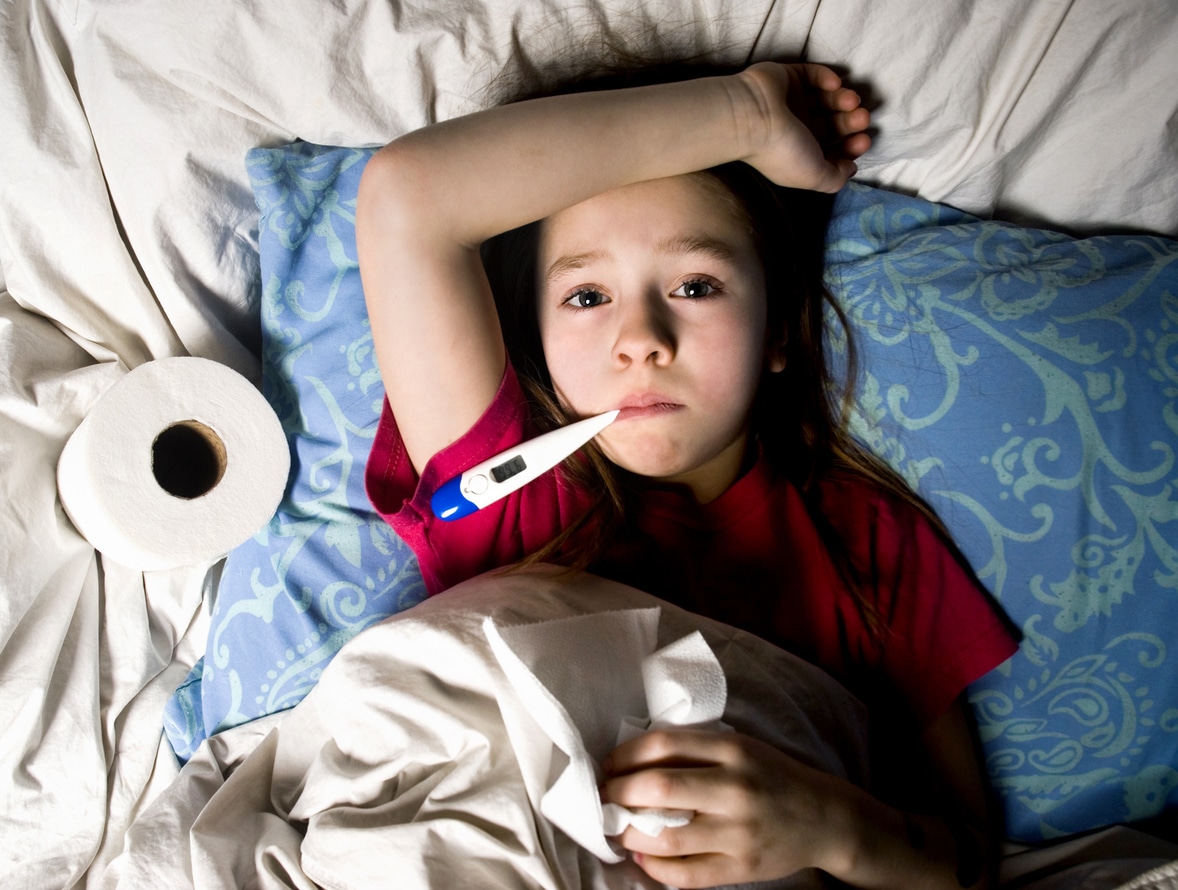It’s morning, and you’re about to get the kids ready for school when they utter the dreaded words: “My throat hurts.”
It could be just a simple, passing cold…or it could be strep throat. But how do you know? And what should you do?
Here, we’ll share the symptoms of strep throat in kids and what you can do to make your kiddo feel better as soon as possible.
What Is Strep Throat Anyway?
Strep throat is the common term for a bacterial infection caused by group A streptococcus that’s usually acquired by coming in direct contact with bodily fluids from someone who’s infected. Kids can pass it to one another when they sneeze, cough, share food or drinks, rub their noses, touch another object, or do any number of things kids do to spread germs (which seems to be everything they do).
The condition is common in children and happens more frequently in the colder months of the year. The bacteria that causes strep is easily transmitted; it’s not uncommon for a child to come down with the illness more than once as they grow.
The Most Common Strep Throat Symptoms
So, how do you know if your kid has a strep infection?
The only way to be sure is to have a throat culture performed by a medical professional. Our urgent care services for kids can use a quick and simple swab to test for the bacteria.
However, since untreated strep throat can lead to more serious complications, like rheumatic fever, kidney inflammation, heart valve damage, and other conditions, it’s important to visit a clinic as soon as you notice symptoms.
The top symptoms you’re likely to see include:
- Throat pain (especially if it onsets relatively quickly)
- Coughing or sneezing
- Pain while swallowing
- Runny nose
- Tonsils that are red and swollen (potentially with white marks)
- Fever
- Nausea or vomiting
- Headache
- Lymph nodes in the neck that are sore and tender to the touch
- Red spots along the roof of the mouth, toward the back
Note that your kid can have some or many of these symptoms and not have strep throat. If that’s the case, there’s a good chance a viral infection might be the culprit.
Adults can also come down with the illness—and there’s a good chance you’ll at least be exposed to it at some point.
How to Treat Strep Throat
As mentioned, treatment starts with a throat culture. It’s a harmless process that delivers reliable results. Your kid will also undergo a physical exam and may also get swabbed for other tests like a rapid antigen test or a PCR test.
If the test is positive, your medical professional may prescribe antibiotics (i.e., penicillin, amoxicillin. These are most effective when taken within 48 hours of first symptoms, which is another reason an early clinic visit is helpful.
Your child can take over-the-counter pain meds like acetaminophen (Tylenol) or ibuprofen (i.e., Advil, Motrin) to relieve symptoms. Your medical professional may recommend against aspirin for children, especially if they’ve recently had flu-like symptoms or are recovering from another illness.
Some kids get a lot of comfort from sucking on ice chips, drinking cold beverages, and—of course—eating lots of ice cream. (Don’t overdo the sugar unless you want a rambunctious patient!)
Strep throat is no fun, but the good news is that diagnosis and treatment is just a quick visit away. Stop by one of our clinic locations (and register online to save time) to get started!

